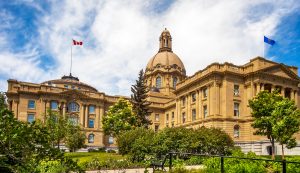A report prepared for the Ontario Road Builders’ Association (ORBA) on the impact of the province’s new cap and trade regime brings news that its members will most likely be spared a direct hit from its emissions reporting and cap burdens.
There are two emissions thresholds ORBA members involved in the core hot mix asphalt, ready mix concrete and aggregates sectors need to be aware of, the report indicates — a lower one that triggers a greenhouse gas (GHG) reporting requirement, and a higher one that brings on the carbon cap and associated abatement and cost mechanisms.
The report offers this assessment: "We do not expect that ORBA members will be directly subject to either the reporting threshold or the emissions cap."
In fact, only two per cent of the province’s economy is vulnerable to the direct impacts of cap and trade, suggest the report’s authors, quoting an Ecofiscal Commission study, and even the indirect effects of fuel hikes and other new costs could be partially offset by economic opportunities as new markets related to cap and trade emerge and incentives to innovate develop.
Overall, it was a positive report in the eyes of ORBA executive director Geoff Wilkinson.
"It is good news for ORBA members, and it’s good for them to know what’s coming," said Wilkinson.
The report, written by Dawson Strategic managing partner Jeffrey Phillips and independent consultant Rene Drolet, titled The Road Ahead, Assessing the Impact of Cap and Trade for Ontario’s Transportation Infrastructure Industry, was published in May.
The cap and trade plan was introduced by Ontario’s Kathleen Wynne government in April 2015 and enacted this spring, and it’s set to launch next January.
Phillips said he thought the program had been carefully rolled out. Even for the core industries that will be impacted as the province aims to reduce carbon use — the report mentions "energy-intensive and trade-exposed" sectors such as steel, refining and coal — there will be mitigating free allowances granted the first few years.
"I think it was well thought through, and Ontario obviously had the benefit of looking at existing systems in Quebec and California to draw on lessons learned," said Phillips.
Cap and trade introduces a new set of economic processes to the province that the report sums up as:
∙ A cap on emissions of a pollutant is set and this cap decreases over time;
∙ Government authorities provide an allowance for every unit of emission generated by a facility;
∙ Allowances can be traded among final emitters; and
∙ Emissions are measured and penalties applied if targets are missed.
"For the road building sector, it will not directly be subjected to the cap, but there will be estimated cost increases in certain areas as a result of it, which we would call indirect impacts," explained Phillips.
The province purposely targeted a small number of large emitters at the facility level instead of impacting greater numbers of emitters at other points of operation, he said, in part to make it easier to administer. Among the three typical facilities operated by ORBA members, the hot mix plants would be the most likely to emit large amounts of CO2, he explained. But the report’s calculations show that no ORBA members in any sector should reach either of the GHG thresholds, said Phillips.
"It is possible in theory that if you owned enough hot mix or Ready Mix facilities that aggregately they could add up to a lot, plus the fleets and emissions, but it is all because of the design of the system and the point of regulation that we see a large sector, that does have GHG emissions associated with it, is not directly subject to the cap," he said.
The report assumes plants are powered by natural gas and offers as an example a typical threshold for hot mix asphalt producers: "A plant would have to produce at least 529,661 tonnes per year in order to reach the reporting threshold of 10,000 tonnes of CO2e and well over one-million tonnes a year to reach the emissions cap threshold."
"There was no mandate to say, make sure every single company is under this or not," said Phillips. "This is an information piece for the membership writ large, so if we are wrong, if there is someone producing over that amount, at least they’ll know."
Indirect impacts for ORBA members could include higher costs through supply chains and spikes in gasoline, natural gas and diesel prices, said the report. "A representative sample from ORBA contractors shows that the additional fuel costs could total over $300,000 per year for a mid-size contractor operating in the road building industry (with a range of approximately $130,000 to $350,000)," the study indicates.
Wilkinson noted, given that the public sector generally pays for roads, "The other thing about our industry, the excess costs will be borne by the public sector owners."
Opportunities identified for ORBA members to profit from cap and trade include taking advantage of a new Greenhouse Gas Reduction Account and also an offsets program, the details of which have not yet been announced. Offsets were defined as a credit for a verified emission reduction from a source outside the cap and trade program.
"One of the ways companies may be interested is to say, Hey you know what, we are thinking of investing in new technology or we are already running high-efficiency burners at the site, which have led to huge reductions, how can we leverage what we are already doing?" Phillips said.
Wilkinson said ORBA would want to make sure the offsets provisions include a grandfathering mechanism, to reflect the conservation investments his members have already made.
"Everything our members are doing now, we want to make sure that is recognized," he said.









Recent Comments
comments for this post are closed